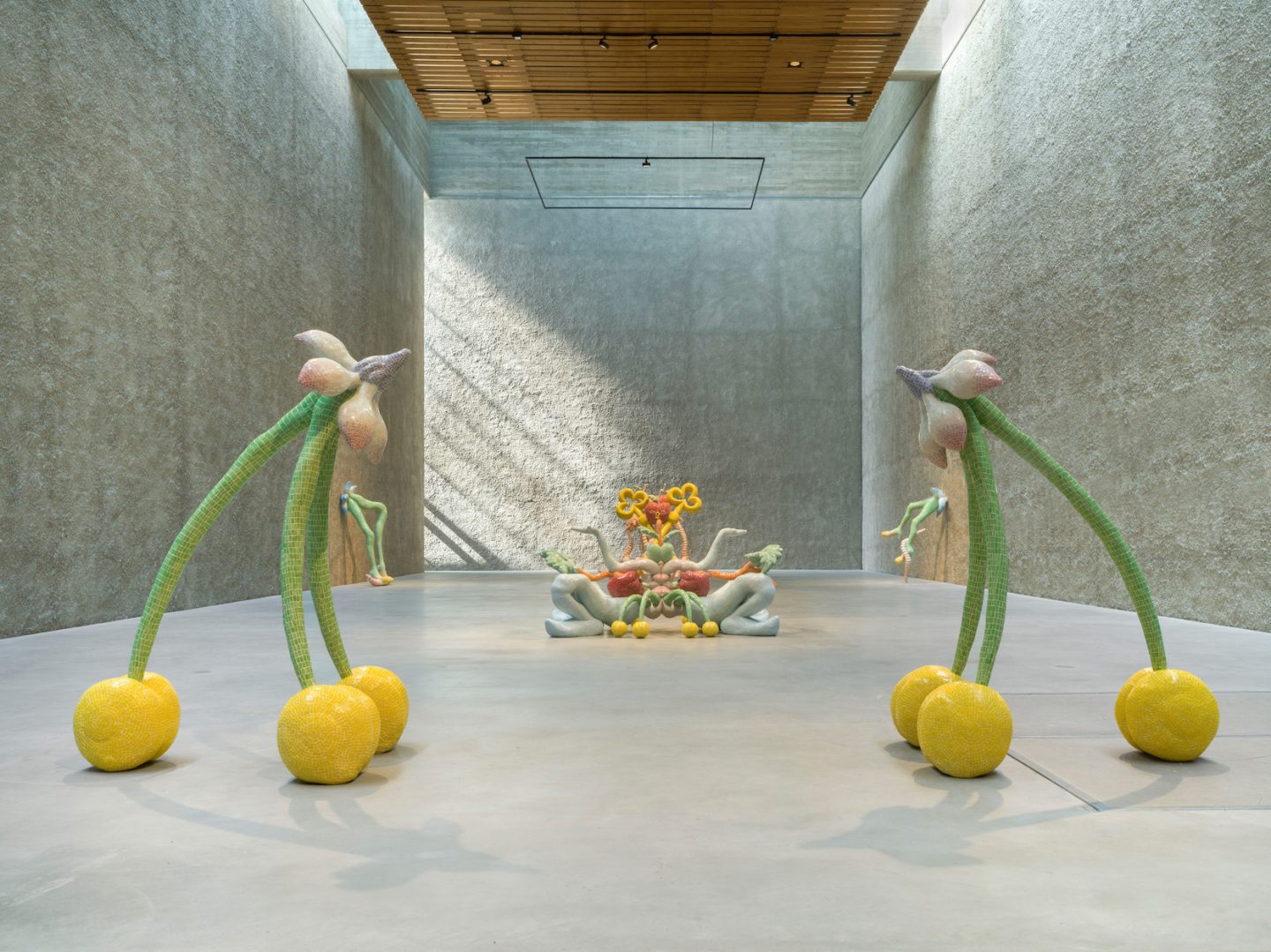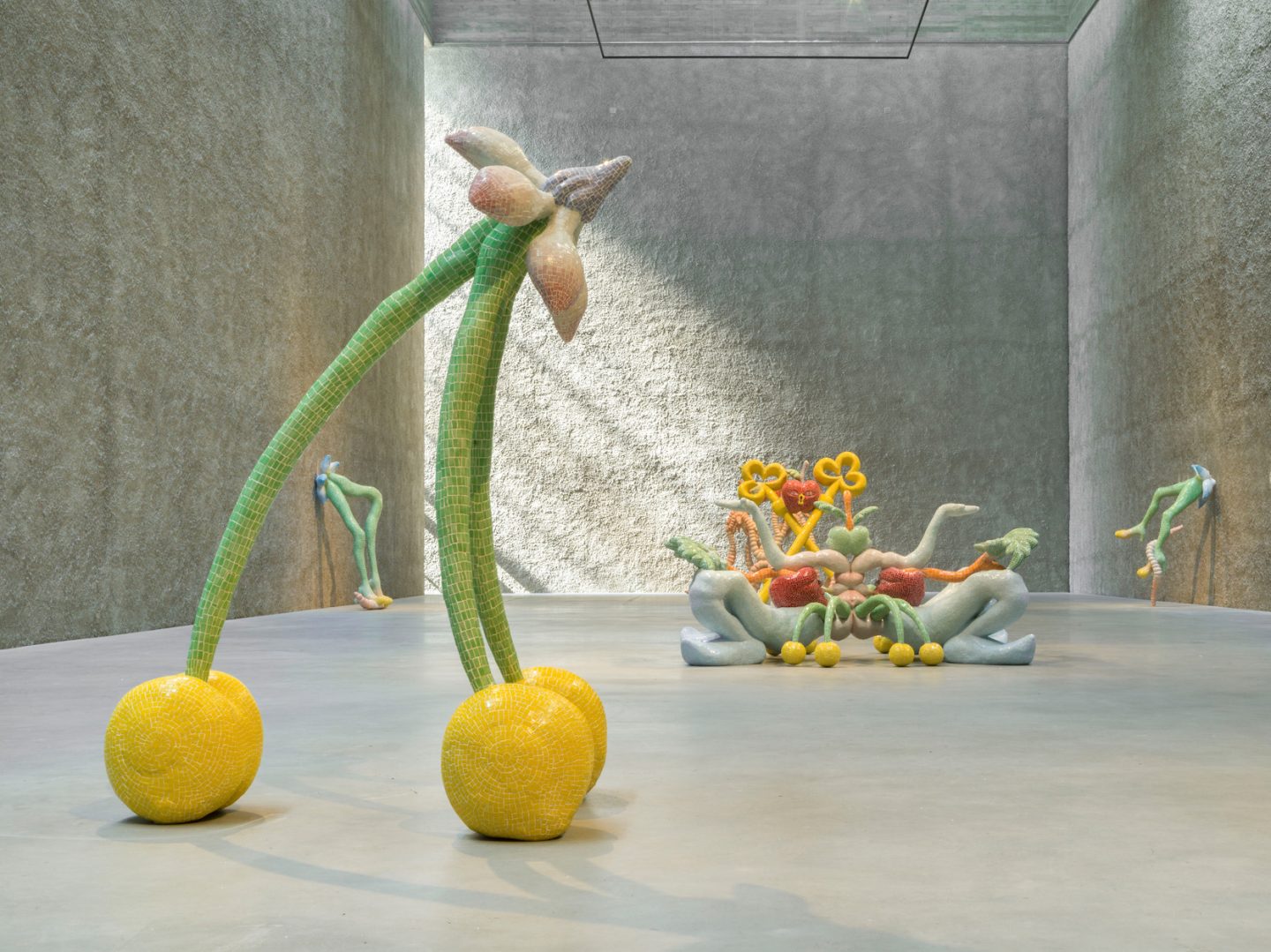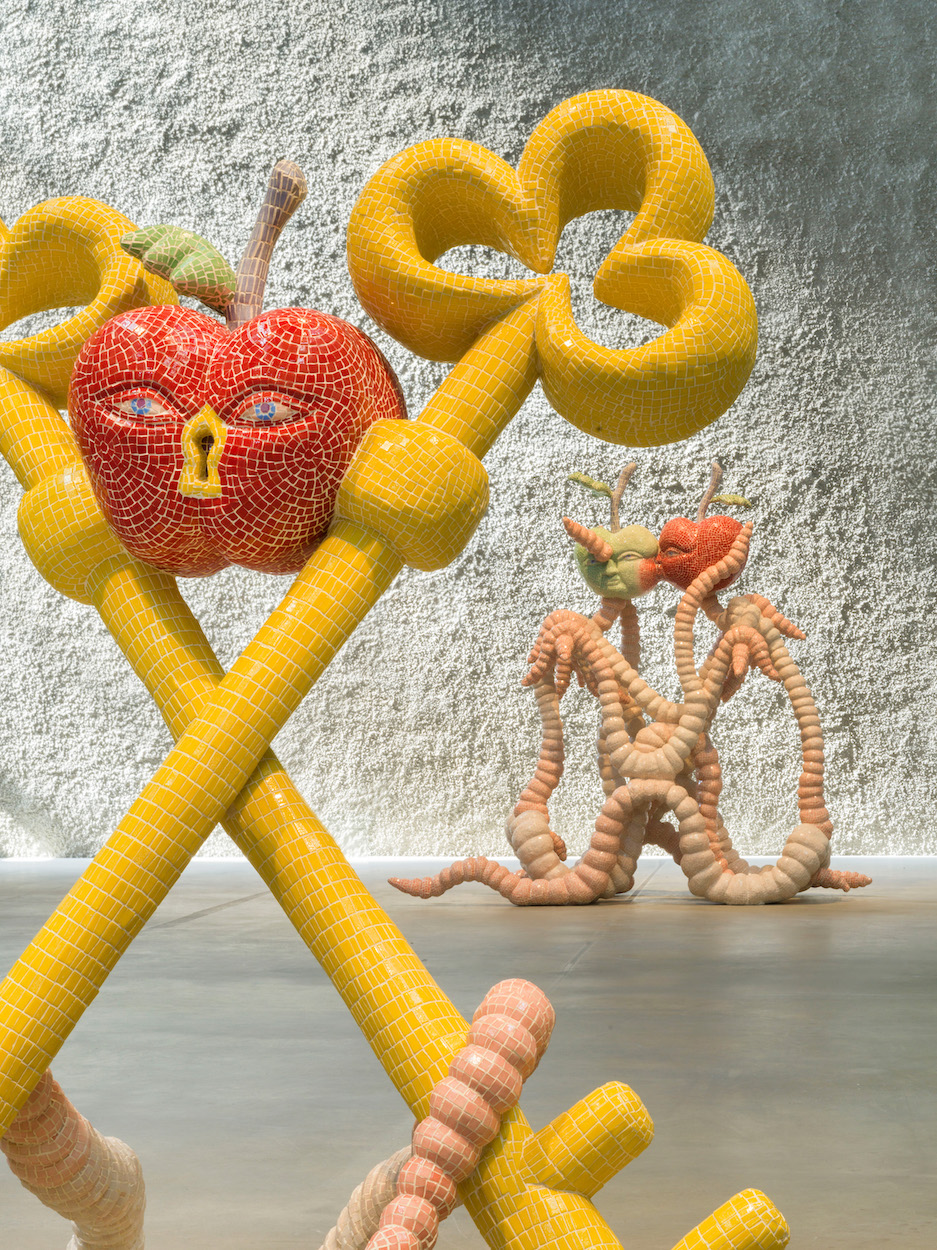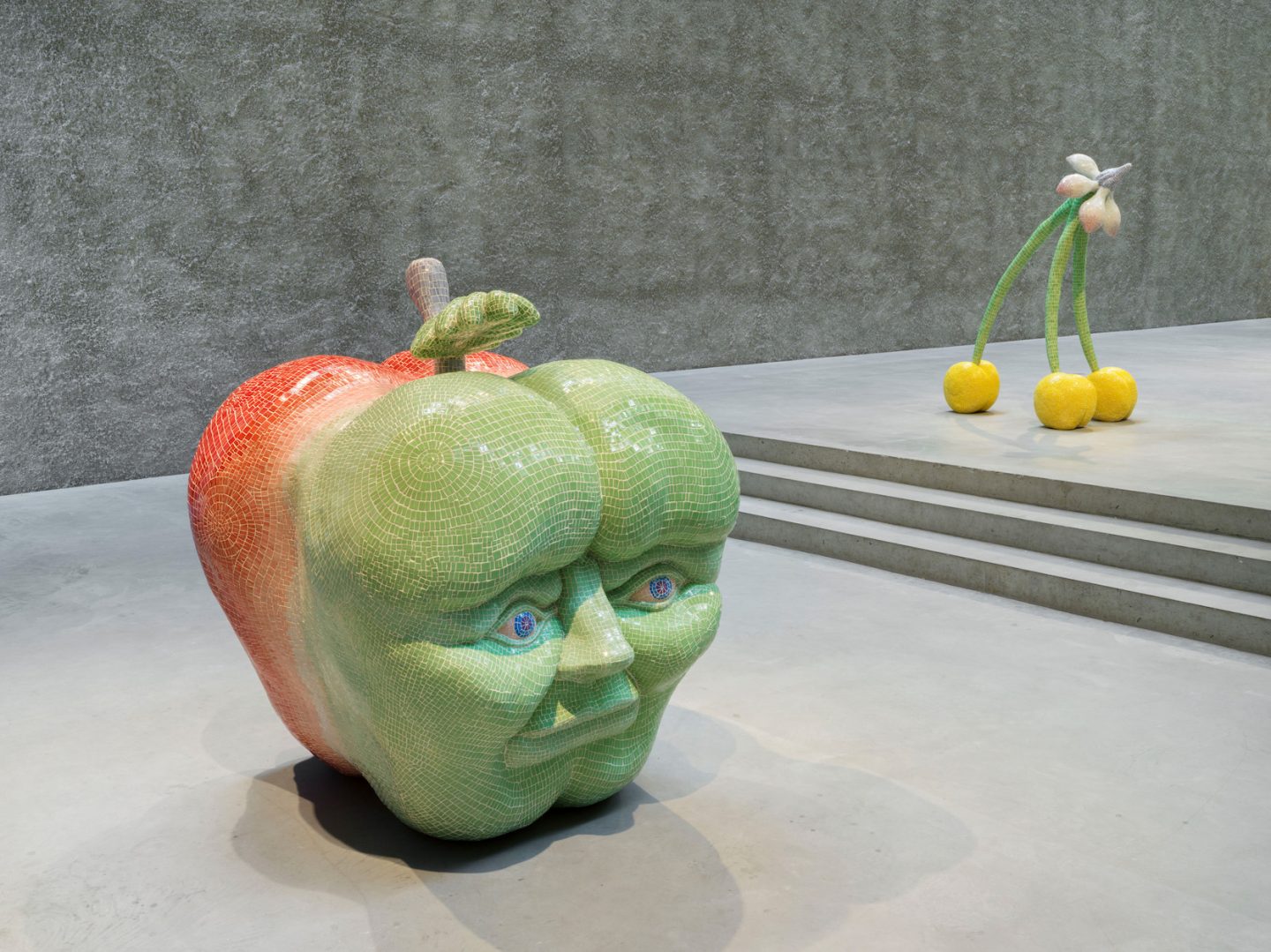
IN CONVERSATION WITH SOPHIE THATCHER
Sophie Thatcher, best known for her role in the critically acclaimed series…
Photography by Jason Renaud; Interview by Louise Garier







Numéro Berlin talked to Zsófia Keresztes about her latest exhibition, her homeland hungary, about different materials and the intersection between analogue and digital objects, published in the #ZUKUNFT Issue of Numéro Berlin. The exhibition at König Galerie is running until November 11th, 2023.
Zsófia Keresztes’ works are colorful, large-scale and create their own world. The hybrid sculptures explore how the real world expands into the virtual one and how they influence each other. The Hungarian artist uses analog materials, especially marble. Most recently, she designed the Hungarian Pavilion at the Venice Biennale. In the interview, she talks about the beginnings of her work, what will influence our future, and what role connections play in it.
I don’t come from a particularly academic family. However, my parents have always been receptive to art, and when they realized I was interested in this direction, they supported me enthusiastically. My mum studied photography and worked on applied photography for a while. She often traveled to the countryside to take portraits. My dad’s family was invested in the florist trade, creating bouquets and wreaths, and later he went into the antique trade. I was thus exposed to a wide variety of practical objects and artworks as a child. The visual culture of different eras and styles came together in my head, forming a strange mass-like conglomeration. Just to give you an example of these objects: I was very impressed by the domestic altars of peasant culture, which were oftentimes realized as spatial collages displayed in small vaults on walls, decorated with wax figures, paper cutouts and metal threads, or artworks by nuns in convents which were the more ornate, more sublime siblings thereof.
I was amazed by the dedication with which these tiny polion ornaments – ornate floral arrangements made of metallic threads, velvet, silk, pearls, jewels and glass paste – were built around the relics. I think this kind of meticulous work has always been a characteristic of mine, regardless of what material I’ve worked with, be it textiles, paper, or, more recently, glass mosaics. The other determining factor is some kind of ingenuity that I have acquired and which I think is typical of most Hungarians, probably a response or an evolved ability to our more limited possibilities here in Central Eastern Europe, which I have often capitalized on in my own working methods.
“The other determining factor is some kind of ingenuity that I have acquired and which I think is typical of most Hungarians, probably a response or an evolved ability to our more limited possibilities here in Central Eastern Europe, which I have often capitalized on in my own working methods.”
I studied ceramics in high school but graduated as a painter from university. In Hungary, art education was very academic and limited at the time I attended these institutions, but now these boundaries are fading. I remember during my first years at university how much I longed to return to the world of forms I had previously explored with ceramics. However, I only gradually dared to incorporate these experiences into my creative process. This was probably also because I had previously approached ceramics purely from a design aspect, creating functional objects. In recent years, I have been drawn to works that enter our living spaces and have a more significant presence. I used to often sleep in my studio after a busy day. I didn’t want to waste the time to head home to sleep. Spending the night among the sculptures was like being part of a pack, one of them, a very comforting feeling.
Connection-seeking formations.
To be honest, I struggle with titles. I’m not a verbal person, and when I have to write something down, or say something, I always feel very vulnerable. I’m scared that I can’t shape it further, that I have to finalize it, and most of the audience will read it for guidance. I’m happy with a title if it’s not some kind of explanation of the work, but rather an extension into another dimension where the story can continue.
For me, one of the most exciting features of mosaics is the grid of lines drawn by tiny, independent pieces placed next to each other. The way in which the organic forms are divided or enclosed by these strict lines. This type of fragmentation is also present in my earlier work; for some reason, I insist on it. I specifically use glass mosaics in my work. I like the way the forms communicate with the viewer through the light shimmering on and bouncing off the glass sheets.
I was interested in taking a perfectly polished, digitally created image, and shattering it to smithereens, taking some of the fragments into my own reality. I wasn’t really interested in finding out anything about it. It was more of an exploration for me.
“Spending the night among the sculptures was like being part of a pack, one of them, a very comforting feeling.”
Hopefully, both, but I’m fundamentally an analogue person.
When I wrote this, my sculptures were like Siamese twins sharing a common organ. I imagined the two symmetrical sides as two distinct, yet interconnected identities, dissolving into a third entity. I wanted to suggest a kind of connectedness in which our possibilities flow through our bodies and become visible without commitment.
There are no specific characters or subjects. I specifically strive to present identities that anyone can identify with.
After setting up the exhibition and displaying it in Venice, the entire material was displayed at the Ludwig Museum in Budapest. Approximately two years were spent on this process. During this period, we a very close relationship with Mónika Zsikla, the curator of the exhibition. This period was full of emotions for us. There was an uplifting sense of achievement, but also some disappointments. It was a remarkable experience and test, both personally and professionally. Overall, I feel that this challenge came at the right moment, which makes me very happy.
In Hungary, the application process takes the form of a curatorial application, which is then evaluated by a professional jury. Mónika approached me with the idea of a joint collaboration, and I said yes without thinking. Our final visual design for the sculptures was already prepared for the competition. We followed the plans very meticulously, and we worked with a lot of people over the two years. It was actually my first project where I let others participate in the construction process, and it was a huge milestone for me. By the time the sculptures were on their way in their gigantic wooden crates, I drifted with the events, letting them flow where they wanted to. Fortunately, looking at the big picture, we’ve had very encouraging feedback, and many new doors have opened for us.

Sophie Thatcher, best known for her role in the critically acclaimed series…
Photography by Jason Renaud; Interview by Louise Garier

FOTOGRAFISKA X LML Adina Bier, the curator and innovative force behind the museum…
Photography by Sascha Rebrikov Interview by Louise Garier

"We have to create something that has a purpose and is useful. And not forced by the…
Interview Carolin Desiree Becker